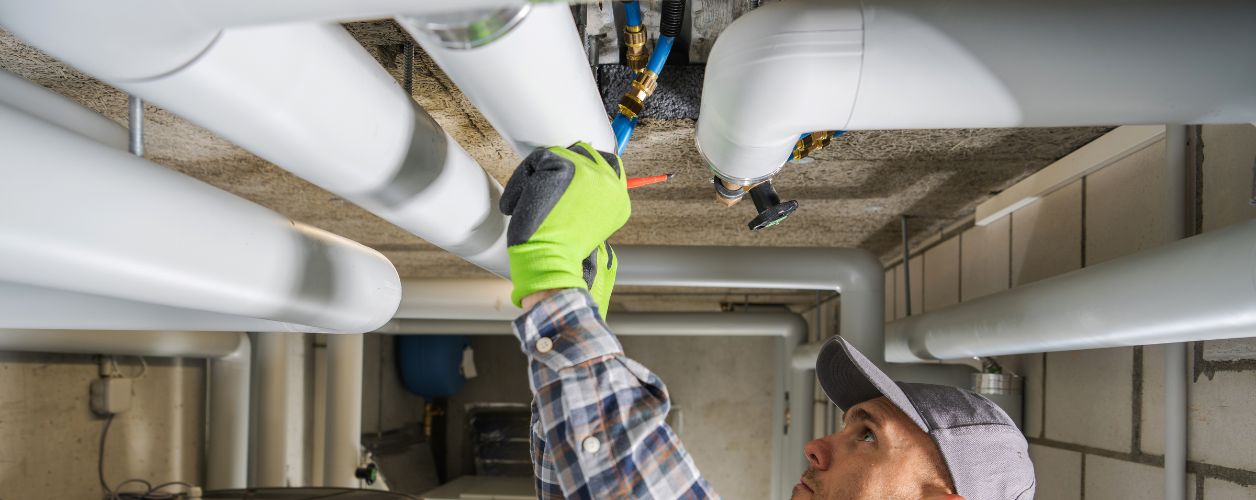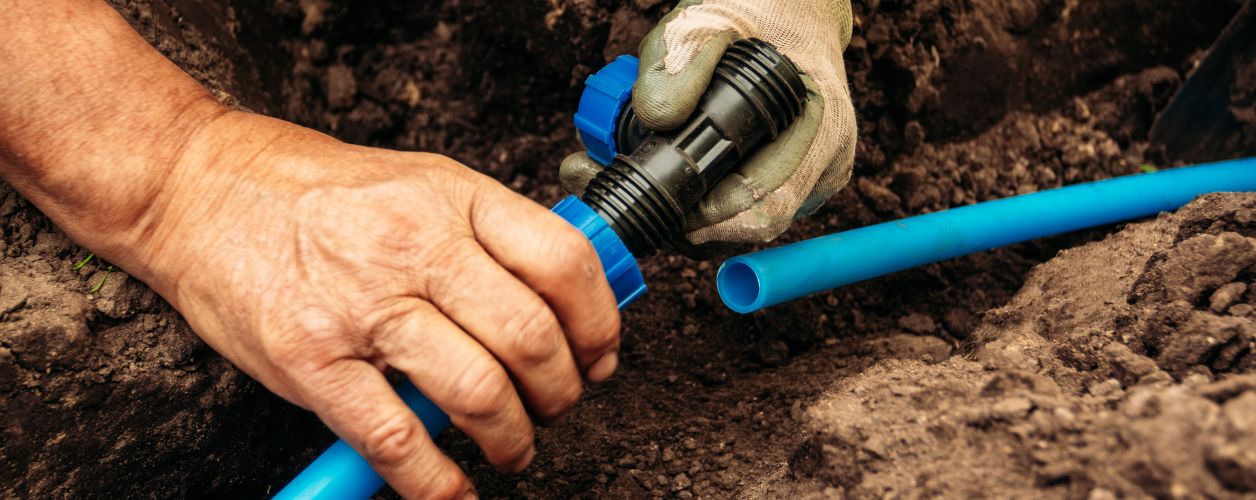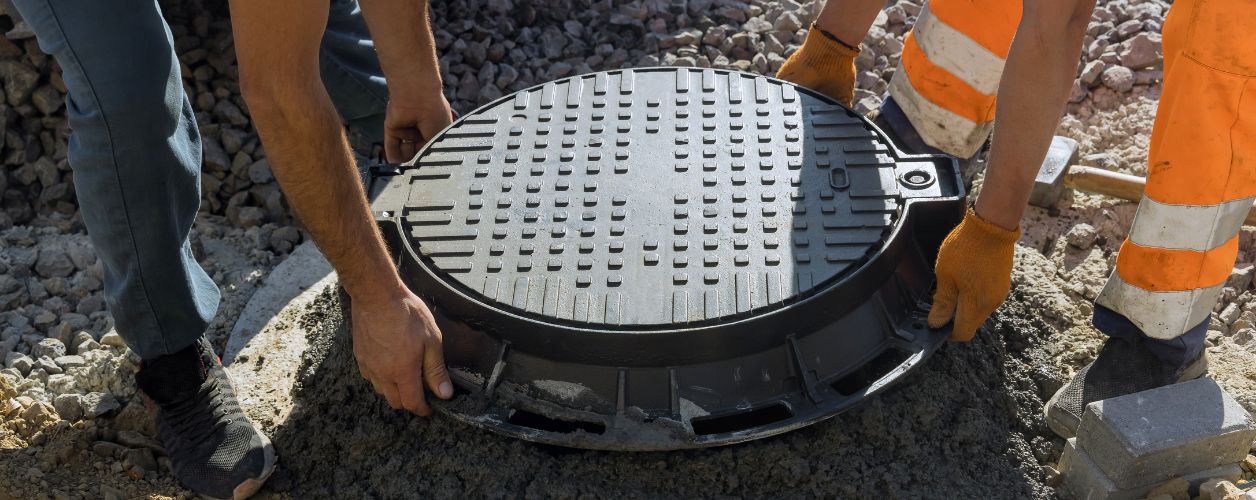How Much Does a Backwater Valve Installation Cost?
Backwater valve installation typically costs $600–$1,500. Installing a backwater valve is the best option when you want to protect your property from unplanned sewer backups. It may give you several benefits. Backwater valves are sometimes referred to as backflow preventers or non-return valves. They are becoming more and more common in both older and newer homes in the UK as flooding and heavy rainfall become more common.
In this thorough 2025 cost guide, we will discuss the costs associated with installing a backwater valve. We will also examine the available various types and describe the installation process. So, you may get a full idea about the backwater valve cost and its affecting factors.
Average Backwater Valve Cost in the UK
Installation Type |
Estimated Cost (including labour) |
|---|
Basic internal backwater valve |
£200 – £450 |
External (underground) valve |
£800 – £2,000+ |
Retrofitting older properties |
£1,000 – £2,500+ |
New builds or planned installations |
£300 – £600 |
Total average cost: £800 – £1,500
Note: Backwater Valve Cost may differ based on the job's complexity, location, and plumber rates.
Regional Backwater Valve Cost Differences
Region |
Average Installation Cost |
|---|
Greater London |
£1,200 – £2,000+ |
South East England |
£1,000 – £1,800 |
Midlands & North |
£800 – £1,500 |
Scotland & Wales |
£750 – £1,300 |
Prices depend on local labour rates and access conditions.
Maintenance & Ongoing Backwater Valve Cost
Backwater valves need to be periodically inspected and cleaned to make sure fat or debris doesn't clog them.
- DIY Cleaning (yearly): Free – £10
- Professional service: £50 – £120/year
- CCTV drain inspection (optional): £100 – £300 every 3–5 years
How Backwater Valves Work
To stop wastewater from backing up into your house, a backwater valve is installed in your drainage or sewer line. Main sewer lines may overflow during periods of intense precipitation. Raw sewage can backflow into your home through sinks, floor drains, and toilets if you don't have a backflow preventer. It can worsen the situation, especially in basements and ground floors.
When water tries to flow in the opposite direction, the valve automatically closes. It allows waste and water to leave your house.
Why You Might Need Backwater Valve Installation
Installing a backwater valve is one way to protect your home from costly and inconvenient sewer backups. Living in a low-lying or flood-prone area puts you at greater risk because stormwater can quickly overwhelm public drainage systems. And it may cause wastewater to backflow into homes.
Lower ground floors and basements are especially vulnerable because they are the first parts of a house to be affected by rising sewer water. Heavy rainfall significantly raises the risk of backflow if your house is connected to a combined sewer system, which uses the same pipes for wastewater and rainwater.
While seeing these issues in the property, installing a valve is an essential step. With this, you can stop future occurrences of sewer backups. Your local water authority may suggest a backwater valve even if there hasn't been any flooding in the past. It becomes more necessary when a CCTV survey or drainage inspection indicates a high risk. When new connections are made to the public sewer or during significant renovations, some water companies or councils mandate or encourage installation.
If you install backwater valves, you can protect your property from unnecessary mess-ups. You can also save your money on excessive cleaning or repairs if you have one. In UK homes, it is usual for homeowners to have a backwater valve in their plumbing systems.
Are Backwater Valves Required by UK Building Regulations?
Building Regulations strongly advise non-return valves, though they are not required for all properties if:
- You're altering the current drain system
- The main sewer is higher than your property.
- There is a risk of flooding in your area.
Councils may require valve installation as a planning condition for approval of new construction or conversions.
Backwater Valve Cost Breakdown by Valve Type
Simple Inline Backwater Valve (Indoor)
- Price: £30 – £80 (device only)
- Installation: £150 – £350
- Best for: Easy access under floors or in basements
- Pros: Affordable, easy to install
- Cons: Not suitable for all homes, may require regular cleaning
Underground Backwater Valve (External)
- Price: £80 – £300 (device only)
- Installation: £800 – £2,000+
- Best for: Homes without interior access to main waste pipes
- Pros: Durable, discreet
- Cons: Costly due to excavation and drainage work
Automatic Backwater Valves
- Price: £300 – £700
- Installation: £500 – £1,000+
- Best for: High-risk areas or critical installations
- Pros: Self-operating, minimal maintenance
- Cons: Expensive, may require power source
Factors That Affect Backwater Valve Installation Cost
There are some major factors that may affect the Backwater Valve Cost. You will get help with the following factors:
- Location of the Valve
It's usually quicker and less expensive to install inside your house. Excavating, reinstalling patios or driveways, and further drainage planning may all be necessary for outdoor installations.
- Property Age and Drain Access
Because older homes frequently have antiquated drainage, retrofitting becomes more costly and labour-intensive, often requiring a drain repair specialist. Inspection chambers or convenient access to main drains may already be present in newer homes.
- Labour Costs
Depending on the location, UK plumbers charge between £40 and £80 per hour. Groundwork contractors may charge £150 to £250 per day for excavation work.
- Permit or Local Authority Requirements
Some councils demand approval before making changes to the external drainage system. Building Control approval may be required, but planning permission is typically not. The range of fees is £100 to £300.
- Drainage Survey (Optional but Recommended)
Pre-installation CCTV surveys are very beneficial as they can help with the installation. Experts use them with pipeline mapping. A survey can cost anywhere between £100 and £300.
What's Included in the Backwater Valve Installation Cost?
Included Item |
Description |
|---|
Supply of backwater valve |
Standard or specialised model |
Labour charges |
Fitting, pipe cutting, sealing |
Drainage or pipe modification |
If re-routing is needed |
Testing and inspection |
Ensures the valve operates correctly |
Cleanup or reinstatement |
Filling excavation or resealing flooring |
Indoor vs Outdoor Installations
Indoor Installations
Experts place the backwater valve inside the plumbing system of the house, usually close to the basement drain or soil stack. They are less expensive, quicker, and simpler to access for upkeep.
Pros:
- Lower labour cost
- Easier to inspect
- Quicker installation
Cons:
- Not suitable if drainage is inaccessible indoors.
- May require floor removal or disruption to the flooring.
Outdoor Installations
Professionals install a backwater valve in the subterranean waste line before its connection to the public sewer.
This entails excavating trenches and potentially reinstalling garden spaces, paving, or concrete.
Pros:
- Can serve the entire property
- Ideal when indoor access is limited
- Suitable for renovations or new builds
Cons:
- Higher overall cost
- More labour-intensive
- Requires planning and sometimes permits
DIY vs Professional Installation
DIY Installation
Only simple inline models are suitable for DIY projects, and only if you have plumbing knowledge.
- Cost estimate for DIY: £50 to £150 (valve + fittings)
- Risks: Improper installation may result in internal flooding, insurance voiding, or failure during storms.
Professional Installation
Compliance with Building Regulations Part H1, which addresses drainage and waste disposal systems, is ensured by hiring a certified plumber for your drain installation.
- Estimated Cost: £800 to £1,500 is the estimated cost, depending on complexity.
- Comfort: Assurance of quality work and appropriate integration with your current plumbing system
How Installing a Backwater Valve Can Benefit You
There are several benefits of having blackwater valve installation in UK homes. They become more essential in regions where people may suffer from high rainfall and sewage overflows. Here's why it's a wise and becoming more and more necessary investment:
Prevents Raw Sewage from Entering Your Home
A backwater valve's main purpose is to prevent sewage and wastewater from backing up onto your property during drainage overloads or storms. If you have a proper installation of a backwater valve, you can easily prevent serious health risks. There will be fewer chances of property damage and unpleasant cleanup expenses.
Protects Basements and Lower Floors from Backups
Sewer backflow is especially common in homes with lower ground floors or basements. Even during severe weather events, these areas remain dry and livable thanks to the protective barrier created by a backwater valve.
May Reduce Insurance Premiums
Backwater valves are now considered a risk-reducing feature by many insurers. Installing one could result in reduced premiums or excess expenses on claims, in addition to making your house insurable in high-risk flood zones.
Essential for Flood-Prone Zones
A backwater valve is frequently regarded as a crucial component of a flood defence strategy in low-lying or flood-prone areas of the United Kingdom, as it helps minimise internal water damage.
Long-Lasting Protection (10–20+ Years)
A prudent one-time investment with long-term benefits, valves are typically constructed from extremely durable materials and can last for 20 years or longer with the right care.
Top Questions About Backwater Valve Installation
- How much time does it take to install?
Two to four hours are expected indoors. Well, depending on the excavation, it takes one to two days for the outside.
- Do I require permission to plan?
Usually not, but a notification from Building Control might be necessary. You may easily consult your local government.
- Can I submit an insurance claim for the cost?
Your insurer might assist with retrofitting as a preventative measure if damage has previously occurred.
- Will it prevent flooding in my house?
Instead of preventing surface water flooding, it stops sewer backups. You may use in conjunction with flood barriers or sump pumps.
- Does an apartment or flat require one?
Yes, if you have a private soil pipe and are on the ground floor or basement level. Otherwise, the freeholder is typically in charge.
- How frequently should the valve be serviced?
at least once a year, particularly before the seasons of heavy precipitation or winter.
Conclusion
One of the cheapest ways to protect your house is to install a backwater valve if you've ever had a sewer backup or if you live in a flood-prone area. You can get peace of mind, long-lasting protection, and lower insurance risk for a comparatively small investment of £800 to £1,500.
Accurate planning can be achieved by getting multiple quotes and first conducting a drainage survey, even though installation can vary greatly based on property type and access. You will get the best consultation by contacting your expert.



